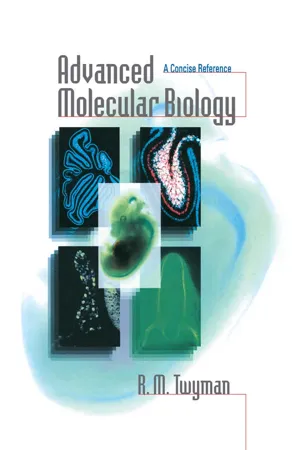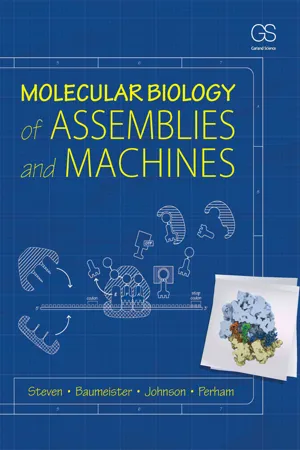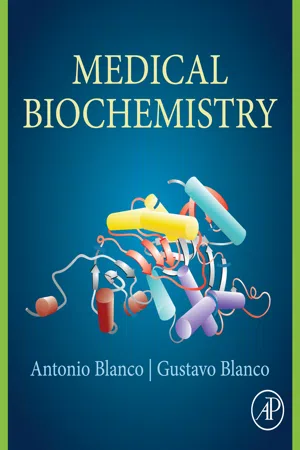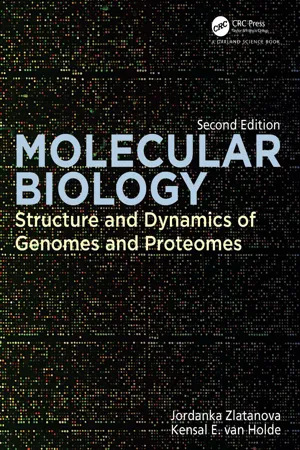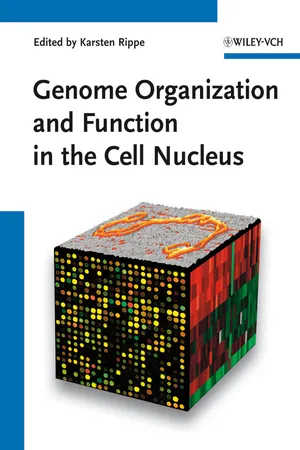Biological Sciences
DNA replication
DNA replication is the process by which a cell makes an identical copy of its DNA. It occurs during the S phase of the cell cycle and involves the unwinding of the DNA double helix, followed by the synthesis of new complementary strands using the existing strands as templates. This process ensures that genetic information is faithfully passed on to daughter cells during cell division.
Written by Perlego with AI-assistance
Related key terms
Related key terms
1 of 4
Related key terms
1 of 3
10 Key excerpts on "DNA replication"
- eBook - ePub
Advanced Molecular Biology
A Concise Reference
- Richard Twyman(Author)
- 2018(Publication Date)
- Garland Science(Publisher)
Chapter 26Replication
Fundamental concepts and definitions- Replication can be broadly defined as genome duplication, an essential process for the propagation of cellular genomes and those of ‘molecular parasites’ — viruses, plasmids and trans-posable elements. The genome to be duplicated is the parental genome, and the copies are daughter genomes.
- All cellular genomes are double-stranded DNA. However, viruses and other genetic elements with single-stranded DNA or RNA genomes must also replicate, and the propagation of the agents responsible for the transmissible spongiform encephalopathies (q.v.) can also be thought of as a type of replication occurring at the protein level.
- At the biochemical level, replication is defined as a template-directed nucleic acid synthesis reaction where the template and nascent (growing) strand are the same type of nucleic acid. This differs from transcription and reverse transcription where one strand is DNA and the other RNA (Box 26.1 ). The replication of double-stranded DNA begins with the parental duplex which separates into two strands; each can act as a template to generate two identical daughter duplexes in a one-step process, direct replication (Figure 26.1 ). The two daughter duplexes are sister duplexes with respect to each other (hence terms such as sister chromatid exchange). However, because each newly synthesized strand is complementary to the parental strand rather than identical to it, the replication of a single-stranded genome must proceed through a two-step process, the first synthesis reaction producing an intermediate of opposite sense to the parent strand, which can itself act as a template to generate replicas of the parental molecule. Such indirect replication and may involve any of the four types of nucleic acid synthesis reaction (Figure 26.1 ).
- Replication is a polymerization reaction and can be divided into stages of initiation, elongation and termination. The elongating replication center requires the coordination of many different enzyme activities, collectively described as the replisome.
- eBook - ePub
- Alasdair Steven, Wolfgang Baumeister, Louise N. Johnson, Richard N. Perham(Authors)
- 2016(Publication Date)
- Garland Science(Publisher)
3 DNA replication3.1 Introduction
Francois Jacob observed that “Everything in a living being is centered on reproduction. A bacterium … what destiny can they dream of other than forming two bacteria?” Central to this anthropomorphic simplification is the process of replication of DNA, the information-bearing molecule in the cell. DNA is replicated at the moment when a number of internal and external factors align. The overall framework for understanding DNA replication was laid down in 1953 with elucidation of the double-helical structure of DNA and the idea of complementary base pairing. Indeed, at the time, James Watson and Francis Crick fore-shadowed decades of studies to understand associated mechanisms when they wrote one of the most memorable sentences in any scientific paper, “It has not escaped our notice that the specific pairing we have postulated immediately suggests a possible copying mechanism for the genetic material”. The clear implication was that the two strands of the double helix could separate to expose nucleobases in each strand, which would then act as templates for the generation of two exact daughter molecules (Figure 3.1A ). This concept of DNA replication, now known as semi-conservative replication, was borne out experimentally soon afterwards by Herbert Taylor, Philip Woods, and Walter Hughes, and independently by Matthew Meselson and Franklin Stahl. These researchers used orthogonal approaches to show that the replication of the parent duplex gave rise to two molecules of daughter DNA in each of which one strand was parental and the other (complementary) strand was newly synthesized.Figure 3.1 Semi-conservative replication of DNA, with two replication forks moving in opposite directions. (A) Each strand of the DNA double helix (dark blue and light blue) is used as a template, generating two exact copies (purple and lilac) of the double helix. An A/T base pair is held together by two H-bonds (pink dots); a G/C base pair is held together by three H-bonds. (B) Upper, electron micrograph of the circular E. coli chromosome (4.6 × 106 - eBook - ePub
- Molly Fitzgerald-Hayes, Frieda Reichsman(Authors)
- 2009(Publication Date)
- Academic Press(Publisher)
Nature article was published in 1953, evidence favoring the double-helix structure of DNA proposed by Watson and Crick accumulated rapidly. Few biologists doubted the accuracy of the molecular model, and most were intrigued with the implications of the double helix for coding genetic information within the DNA structure. Scientists also recognized that the double-helix architecture of paired bases on two strands would accommodate the biochemical requirements for DNA replication. Still no one yet understood how the DNA double helix in a chromosome could pass genetic information on to the next generation. It was quite apparent that solving the molecular structure of DNA had not answered all the important questions about DNA, but in fact solving this scientific puzzle was the amazing beginning of the science of molecular biology. With time, this information gave rise to the fruits we know of as DNA science and biotechnology.DNA replication
The Structure of DNA Leaves an Open Question
The paired bases (A-T and G-C) in the DNA double helix accommodate the biochemical requirements for reproducing or duplicating the DNA structure and information. Indeed this critically important point was not lost on Watson and Crick, who wrote one of the greatest understatements of all time in their DNA helix paper:It has not escaped our notice that the specific base pairing we have postulated immediately suggests a possible copying mechanism for the genetic material.This is one of the most appealing features of the Watson–Crick DNA model; the structure of the DNA double helix provides insight into how the DNA molecule duplicates. In cells, this process is called DNA replication. The copying and distribution of DNA is a key process in cells with major implications for the mechanisms that operate to transmit genetic information from one generation to the next. From the DNA structure it is easy to see that one strand of the double helix has a base sequence that unambiguously determines the base sequence of the opposite complementary strand (Figure 2.15 ). Any sequence of A, G, C, or T bases can reside on one DNA strand, but the second strand must contain the complementary base sequence. For example, if the base sequence in one strand is G-T-A-C-C-A-T…, the base sequence of the partner strand must be C-A-T-G-G-T-A…. For the DNA replication process to occur, the DNA double helix must unwind and the DNA strands must “unzip” and separate. This allows both single strands of DNA to become accessible to the enzymes that use each strand as a template to create a new, complementary DNA strand (Figure 2.15 ).Figure 2.15 Overview of DNA replication. (A) The two DNA strands (red backbones) in the parent DNA double helix are both used as templates by DNA polymerase and are copied into new DNA strands (gold backbones). (B) Any sequence of A, G, C, or T bases can reside on the DNA template strand (red), but after replication, the new DNA strand (blue - eBook - ePub
- Rene Fester Kratz, Donna Rae Siegfried(Authors)
- 2019(Publication Date)
- For Dummies(Publisher)
gametes (cells, specifically eggs and sperm, containing half the genetic information of their parent cells) get together to make new individuals. When the genetic information of the gametes joins together, the new individual has the correct total amount of DNA.How DNA replication Works
If one cell is going to divide to produce two new cells, the first cell must copy all its parts before it can split in half. The cell grows, makes more organelles (see Chapter 3 for the full scoop on organelles), and copies its genetic information (the DNA) so that the new cells each have a copy of everything they need. Cells use a process called DNA replication to copy their genetic material. In this process, the original DNA strands serve as the template (or guide) for the construction of the new strands. It’s particularly important that each new cell receives an accurate copy of the genetic information because this copy, whether it’s accurate or faulty, directs the structure and function of the new cells.The basic steps of DNA replication are as follows:- The two parental DNA strands separate so that the rungs of the double helix ladder are split apart with one nucleotide on one side and one nucleotide on the other. (See Chapter 2 for a depiction of a DNA molecule.) The entire DNA strand doesn’t unzip all at once, however. Only part of the original DNA strand opens up at one time. The partly open/partly closed area where the replication is actively happening is called the replication fork (this is the Y-shaped area in Figure 5-1 ).
- The enzyme DNA polymerase reads the DNA code on the parental strands and builds new partner strands that are complementary to the original strands. To build complementary strands, DNA polymerase follows the base-pairing rules for the DNA nucleotides: A always pairs with T, and C always pairs with G (see Chapter 2
- eBook - ePub
- Antonio Blanco, Gustavo Blanco(Authors)
- 2017(Publication Date)
- Academic Press(Publisher)
Chapter 21The Genetic Information (I)
Abstract
DNA biosynthesis occurs when a cell divides, in a process called replication . It involves separation of the DNA double helix and subsequent synthesis of complementary DNA strand, using the parent DNA chain as a template. Helicase unwinds the DNA strands and topoisomerase relieves tensions originated by the unwinding process. “Replication forks” move in opposite directions to form the new DNA. First, an RNA primer of 10 nucleotides in length is formed by α-primase. DNA elongation is catalyzed by polymerases , which assemble the new strand of DNA by addition of complementary nucleotides on each strand of the original DNA. As the chains are synthesized in the 5′ to 3′ direction, it can be performed continuously on one strand (leading strand) . The other strand (lagging strand ) has to be synthesized in segments (Okasaki fragments ). Structural units used for synthesis enter as deoxyribonucleoside triphosphates (dATP, dGTP, dTTP, and dCTP). Telomerase adds repeated sequences to the end of chromosome to replenish the segments lost after each replication. DNA repair mechanisms correct errors during the process of DNA synthesis. DNA recombination is an event that takes place in the gametes during meiosis. It involves the exchange of DNA segments between two homologous chromosomes. Restriction endonucleases are enzymes which digest phosphodiester bonds at specific sites (palindromic sites) in the DNA double helix. RNA biosynthesis is performed via a process called transcription . It involves the assembly of a complementary RNA using DNA as a template. It is catalyzed by RNA polymerases . Only one of the DNA strands serves as a template. Ribonucleoside triphosphate molecules (ATP, GTP, CTP, and UTP) are used for RNA synthesis. mRNA synthesis starts by binding to a promoter. Transcription factors are responsible for enzyme-promoter interaction. RNA synthesis proceeds in the 5′ to 3′ direction. The 5′ end of the newly synthesized RNA strand receives a “cap” of triphosphate 7-methyl-guanosine, which provides stability. One hundred to two hundred adenine nucleotides are added at the 3′ end (poly A tail ). Reverse transcriptase - eBook - ePub
Molecular Biology
Structure and Dynamics of Genomes and Proteomes
- Jordanka Zlatanova(Author)
- 2023(Publication Date)
- Garland Science(Publisher)
When organisms reproduce, they must pass their genetic information accurately to their descendants. Within each organism, dividing cells need to replicate their DNA in a precise manner, so that the two daughter cells inherit exactly the same genetic information from the mother cell. Organisms, and viruses, have evolved complex and highly regulated replication machineries to do just that. The remaining chapters are devoted to the questions of how DNA is replicated, sometimes rearranged, and often repaired. In this chapter, we describe how DNA replication occurs in bacterial cells and viruses, whereas the more complex processes involved in eukaryotic replication, in both mitosis and meiosis, form the focus of Chapter 20. 19.2 Features of DNA replication shared by all organisms Replication on both strands creates a replication fork As we know from Chapter 4, the double-helical model of DNA structure, put forth by Watson and Crick in 1953, immediately suggested semiconservative replication as one possible mode of DNA replication. The Meselson–Stahl experiments demonstrated that DNA does indeed replicate in this way (Box 19.1). Because both strands of the parental DNA helix are replicated, the helix must be unwound and the two strands copied separately. Thus, replication occurs at a Y-shaped structure, termed the replication fork (Figure 19.1A); the fork moves steadily through a parental DNA helix, producing two daughter helices behind it, which form the two arms of the Y. Figure 19.1 DNA replication. (A) DNA polymerase at the replication fork uses deoxynucleoside triphosphates (dNTPs) as substrates for the polymerization reaction; the nucleotides to be added to the nascent DNA chain are selected according to the base-pairing rules that govern DNA structure - eBook - ePub
Molecular Biology
Academic Cell Update Edition
- David P. Clark(Author)
- 2012(Publication Date)
- Academic Cell(Publisher)
5 Cell Division and DNA replicationSummary
One of the basic tenets of the central dogma is the ability to replicate or copy the genome and pass the information onto the next generation. There are two stages of replication. First, the DNA helix at the origin is separated into two single-strands of DNA. The second stage is where the replication apparatus or replisome (including DNA polymerase) recognizes the origin and starts adding complementary nucleotides to the open region, only working in a 5′ to 3′ direction. Semi-conservative replication, as it is termed, always produces a hybrid strand of DNA for the daughter cell, where one strand is from the parent and one is newly synthesized. Since DNA polymerase only adds nucleotides in one direction and the two strands of DNA run antiparallel, the two strands are replicated differently. The leading strand is produced continuously, making one new complementary strand from the origin to the termination site. The lagging strand is made in discontinuous pieces called Okazaki fragments and these are later connected together.The replisome must first contend with the structure of DNA in the cell or nucleus. As the helix starts to unwind during replication, positive supercoils form upstream of the replisome, therefore, these initially unwind the negative supercoils. Eventually, the positive supercoils of unwinding overcome all the supercoiling that is naturally present, and replication would never continue without releasing the tension that builds upstream from where the helix unwinds. The supercoils that form during replication must be released by topoisomerase enzymes called DNA gyrase and topoisomerase IV. In eukaryotes, the histones also pose a problem, and they must be removed from the parental strand and replaced in each new copy of the genome.During the first stage of replication, DNA at the origin is melted apart to form two single strands and the replication apparatus is assembled. The strands are separated by DNA helicase which unwinds the helix and melts the hydrogen bonds between base pairs. Since these easily reform, the single-strands are coated with single-stranded binding protein (SSB protein). DNA polymerase III is unable to start synthesizing a complementary strand because it requires a free 3′ -OH end. To solve this problem, a special RNA polymerase (called primase) enters the origin and starts synthesizing a brand new strand of RNA. It only makes a short piece called an RNA primer which is then elongated by DNA polymerase III, by adding free nucleotides complementary to the template strand. - Karsten Rippe(Author)
- 2012(Publication Date)
- Wiley-VCH(Publisher)
Furthermore, because of the genome-wide alterations in chromatin structure that occur during replication, S-phase has also been considered as a unique window of opportunity for cells to modify chromatin structures that influence gene expression patterns and thus cell fate. Thus chromatin dynamics during replication have to meet the dual challenge of ensuring both the maintenance of the epigenetic fabric of the genome in a given lineage and also orchestrating changes in chromatin structure that could promote a switch during cell differentiation and development. 15.1 Replication in a Chromatin Context: Basic Issues and Principles The discovery of the double helix as the basis of DNA structure led to the first proposal that genetic information is replicated in a semi-conservative manner [3]. Since then, much has been learnt about the enzymes and machinery at work during replication [4, 5] as well as DNA synthesis during DNA repair (Chapter 16). The antiparallel nature of duplex DNA in all organisms poses a directionality problem for the replication of DNA which proceeds in an asymmetric manner (Figure 15.1a). DNA polymerase ∈ ensures the continuous DNA synthesis on the leading strand, while DNA polymerase δ proceeds in a discontinuous fashion by Okasaki fragments on the lagging strand [5]. These specialized DNA polymerases are helped by the DNA processivity factor proliferating cell nuclear antigen (PCNA) which is loaded on both strands [7]. However, how inheritance of genetic information is coupled with chromatin duplication at the replication fork is also important, and in particular how components of the DNA replication machinery, called the replisome, are potentially involved in ensuring such a link. Figure 15.1 (a) Histone dynamics at the replication fork in eukaryotic cells: how to maintain nucleosomal density. DNA replication proceeds in an asymmetric manner with continuous synthesis on the leading strand and discontinuous synthesis on the lagging strandPart 4 How genomes replicate and evolve
Chapter 15 Genome ReplicationDOI: 10.1201/9781003133162-15CONTENTS
15.1 The topology of genome replication 15.2 The initiation phase of genome replication 15.3 Events at the replication fork 15.4 Termination of genome replication 15.5 Regulation of eukaryotic genome replicationThe primary function of a genome is to specify the biochemical signature of the cell in which it resides. We have seen that the genome achieves this objective by synthesis and maintenance of a transcriptome and proteome, whose individual RNA and protein components carry out and regulate the cell’s biochemical activities. In order to continue performing this function, the genome must replicate every time that the cell divides. This means that the entire DNA content of the cell must be copied at the appropriate period in the cell cycle and the resulting DNA molecules distributed to the daughter cells so that each one receives a complete copy of the genome.When studying genome replication, it is easy to become absorbed in the molecular details and to lose sight of the broader implications of the process. For example, at the molecular level, we look on the accuracy of DNA replication as vital in ensuring that daughter cells acquire precise copies of the genome, so that those cells can function in the same way as their parent, or can adopt new functions in accordance with the genetic programming contained in the nucleotide sequence of the genome. However, at a higher level, absolute and inviolate identity between parent and daughter genomes would make evolution impossible, because the latter depends on the generation of genome variants that give rise to organisms with modified characteristics and different degrees of fitness to their environment. This variation is responsible not only for the differences between species, but the differences between the members of a single species.- Naoki Sugimoto(Author)
- 2021(Publication Date)
- Wiley-VCH(Publisher)
8 Replication The main points of the learning: Study the basis of replication in human cells. Understand the function of non-canonical structures (especially G-quadruplex and i-motif) in replication processes. Consider the impact of a chemical approach using small ligands and oligonucleotides toward regulation of replication. 8.1 Introduction The genomic DNA in a cell has to be accurately copied for the daughter cells by replication at each cell cycle, which is one of the key reactions for central dogma of molecular biology. In the reaction, DNA polymerase (DNAP) with other supportive proteins initiates the reaction and synthesizes the nascent DNA strand complementary to the template DNA. Through these processes, the genomic DNA strand forming a duplex needs to be unwound for initiation of the replication reaction and should form a single-stranded state for the processivity of DNAP. Therefore, the formation of non-canonical structures along the template DNA could influence the replication. The error of replication leads to mutation and recombination of the genomic DNA, which can cause critical diseases. In this chapter, the effect of the non-canonical DNA structures, especially G-quadruplex (G4) and i-motif on the processes of replication is introduced. Although the replication machinery and pathway of replication is differed in prokaryote and eukaryote, the eukaryote especially in the case of human cell was focused in this chapter. 8.2 Replication Machineries In the cellular cycle, there are sequential steps divided into phases termed G 1, S, G 2, and M (Figure 8.1). During S-phase, the replication of the genomic DNA occurred. DNA replication consists of several reaction steps including initiation, elongation, and termination processes. DNAP catalyzes the polymerization of DNA along a template DNA. DNAP recognizes the 3′ end of the primer strand or the nascent strand (i.e
Index pages curate the most relevant extracts from our library of academic textbooks. They’ve been created using an in-house natural language model (NLM), each adding context and meaning to key research topics.
Explore more topic indexes
Explore more topic indexes
1 of 6
Explore more topic indexes
1 of 4
